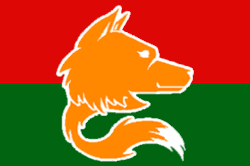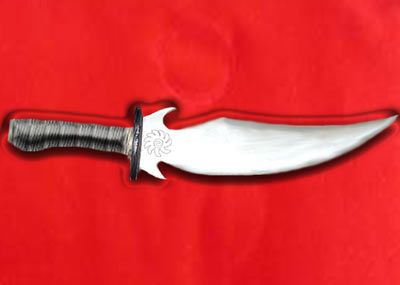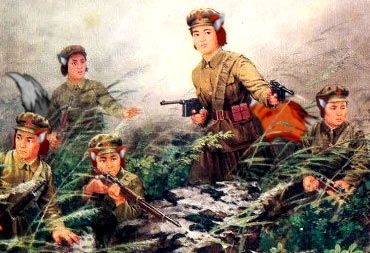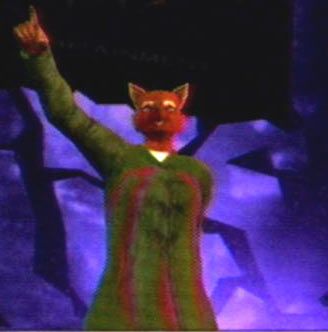Tsuli

The Tsuli Ethnic Flag
The Tsulitxi is a form of the Foxgirl indigenous to Fish Island. Tsuli in the Patoxito tongue means foxes, as from their appearance one can clearly see why this is so with their fox-like features.
The Tsuli had kept themselves hidden from the human settlers of Fish Island until the 1930s when Patoxia begun a large campaign of settling The East Pacific Island that had been held by the American and Foreign Agency (the American and Foreign Agency had also effectively ruled Patoxia from 1848 to 1927). One very interesting thing discovered quickly was that the Tsuli had shared essentially the same basic language and culture (however with a number of differences possibly related to species differences) as the Patoxians... As to how exactly this came to pass is considered a mystery, the Tsuli however regard themselves as a very ancient and special group descended from a sub-group of a 'mythical' civilization that existed in The East Pacific before the appearance of human civilizations in that region.
Contents
Physical
The Tsuli are a predominantly female race, with the average population typically having a 3:1 ratio of females to males. Unlike a number of species, the male is considered the 'weaker sex' among the Tsuli, for instance, the Tsulitxi females have strength similar to baseline human males. This is due to a different, more efficient muscular structure than humans. Males on the other hand typically have a smaller, more gracile body and display less body strength then the females.
Tsuli fur is highly variable in color and can range from yellow-red to black, the most common eye colors include green, amber, and brown.
Tsuli tend to have better vision, sense of smell, and hearing compared to baseline humans.
The daylight vision of the Tsuli is slightly superior to that of the average human. At night however their vision is far superior to that of a baseline human, and can generally see in anything other than total darkness.
The sense of smell on the Tsuli is also superior to baseline humans. It is not uncommon for Tsuli to be able to identify an individual by smell alone, some can even pinpoint an individual by relying on scent alone (although this often requires training).
Some of the Tsuli's emotions and conditions can cause them to release pheromones which serve as a non-verbal system of communication.
The hearing of Tsulis is far superior to that of humans, typically extending into the ultrasonic range of sound.
As result of their typically higher metabolism Tsuli tend to be more agile, flexible, higher dexterity, and have faster reflexes than baseline humans. They also tend to heal faster than humans. Higher metabolism is not without it's disadvantages however, as Tsuli are typically more susceptible to poison and radiation than baseline humans, and must eat more than baseline humans to maintain themselves.
Cultural
The most common form of Tsuli social arrangement is the Sojen or Den. This is a family structure cheifly composed of and headed by related or otherwise associated female members. Tsuli attach great importants to their dens and much ritual is associated with it.
Important Tsuli Cultural Artifacts
The Taiyido

A Taiyido bearing the symbol of the Kolitxi Sojen.
The Taiyido is considered to be a very special artifact among the Tsuli as it symbolises their very honour and connection to their Sojen. The dagger (which can come in several styles) is engraved with the symbol of a particular Tsuli Sojen. Only the leader of a Sojen has the master casts for this symbol, and thus the Taiyido serves as an extra means of identification.
It is usually found on Tsuli at all times and is used in many of their rituals particularly those which involve blood letting. Tsuli will not let their personal Taiyido out of their possession under normal circumstances and if one seeks to take it from them they will resist bitterly and feriously.
The Amalixita
The Amalixita or Tsuli Blood Tree is a special small tree (similar to a Bonsai Tree) that is cared for by the leader of a Sojen. The Amalixita is used as a symbol of the bloodline and unity of the Sojen.
At a time of initiation into a Sojen (by joining or coming of age) a Tsuli makes a slash on their left hand (or their right if they are left handed) and allows some blood to be dropped in to the plant's soil to be absorbed into the plant. Should the Amalixita die, it is chopped up and used to fertilise the Sojen's next Amalixita.
The whole point of this is that the Amalixita becomes a symbol of the living eternal bond of the Sojen over all of time as the Amalixita contains (in Theory) a part of every member of the Sojen since the Sojen was formed. Should a Sojen die out it's Amalixita is returned to a Tsuli shrine to be used to fertilise new Amalixita for Sojens.
Types
Tsulitxi

The original Tsuli group, generally Tsulitxi (which means Fox Tails in Patoxito) are outwardly similar to humans in most ways, with the exception of a fox-like tail, fox-like ears (although the ears are higher on the head than human ears), slightly larger eyes, and more pronounced canines.
The tail and ears are covered in fur, The rest of the body, however, is not covered in fur, with the exception of locations and densities of hair that are similar to baseline humans.
The eyes of a Tsulitxi tend to be on the whole larger than humans and can sometimes appear luminous in darkness.
The average height of Tsulitxi is generally slightly smaller than the average human height. The average Tsulitxi tends to have a lean and/or athletic body types, this is due to a metabolism that is higher than the normal human metabolism.
The Tsulitxi have earned a reputation as as earnest scholars, free spirits, devoted lovers, seductresses par excellence, tricksters, drinking companions, karmic avengers, and great moralisers.
Tsulagyani

An 'Advanced' form of Tsuli (Tsulagyani means Fox Women), during the 1950s and 1960s a small number of Tsulitxi were having problems with fatal birth defects in their infants. Dr. James Hammond a scientist working at the Draken Fyre Research Institute tried to correct the problem by manipulating the Tsulitxi genes. Instead of fully correcting the problem he ended up accidentally awakening a number of latent sequences in the Tsulitxi DNA.
The resultant offspring were more fox-like in appearance. The Tsulagyani, as the creatures came to be called, had in addition to the tails and ears, possessed a more fox-shaped head, a snout, eyes, facial features, and was completely covered in fur. The Tsulagyani was also slightly taller, more intelligent, athletic, stronger, and more fox-like in behaviour compared to the Tsulitxi.
Instead of rejecting these creatures as monsters, a number of Tsulitxi believe that they were to be honoured and represented their future... This was all very puzzling to the humans on Fish Island.
Also interesting is that the Tsulagyani attributes are linked and very dominant, meaning that as time passes, more and more of the Tsuli shall have this form.
Since their creation the Tsulagyani have been fully incorporated into Tsuli society, often in honoured places.
